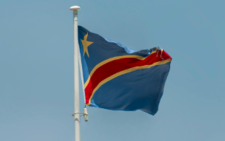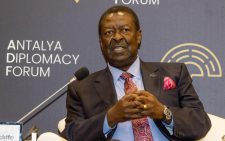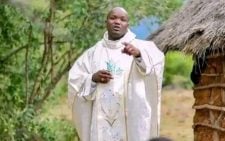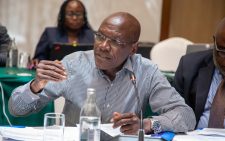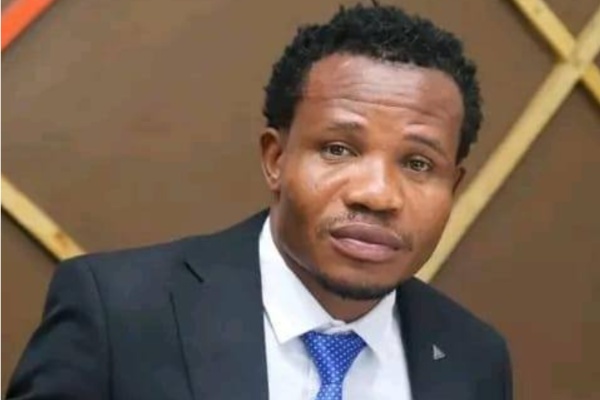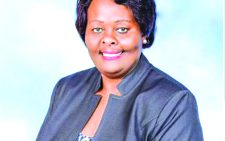DR Congo unveils ambitious green
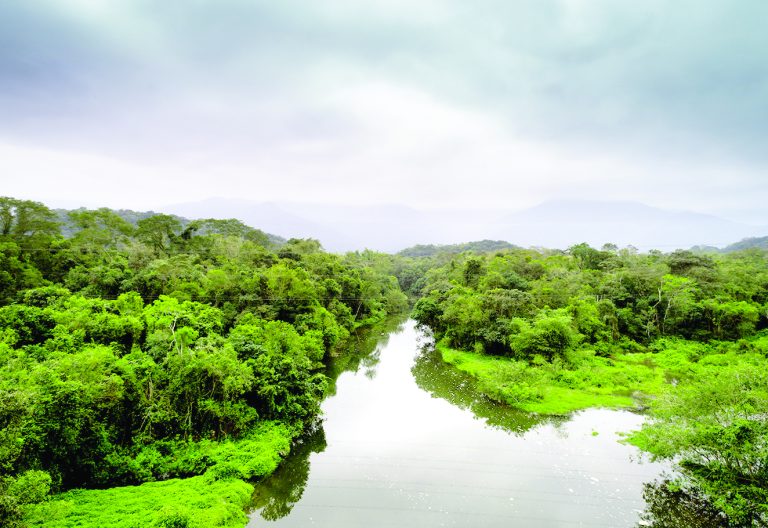
One of the biggest and most innovative infrastructure projects with great potential to transform Africa’s environmental and economic landscape has been launched.
Perhaps befittingly, there was no better stage to announce the initiative than at the World Economic Forum (WEF) in Davos, Switzerland, which ended on Friday.
The WEF annual meeting brings together approximately 3,000 leaders from more than 130 countries. Top on the agenda for leaders from Africa was the burgeoning youth population, Africa’s expanding influence on the global stage, its potential challenges and new global leadership.
Leaders from government, business and civil society gathered to explore the continent’s demographic dividend, address persistent divides in digital access and healthcare, and recognise Africa’s growing role in shaping international affairs.
Here the Democratic Republic of the Congo (DRC) presented its vision of the Green Corridor Kivu-Kinshasa, the Earth’s largest protected tropical forest reserve.
The historic Green Corridor initiative in the DRC, believed to be the richest country in Africa in terms of natural resources, will see an area covering 540,000km2, an area the size of Western Europe’s largest country- France, become protected through partnerships with communities that integrate conservation and restoration with green economic development.
Economic opportunity
Not even the escalating tensions in the east of the DRC could deter President Félix-Antoine Tshisekedi Tshilombo from telling world leaders at Davos about his government’s determination to establish what has been described as a global gateway. It was aptly described as “a green corridor preserving the last lungs of the earth through green economic growth”.
Other African leaders at Davos were South Africa’s President Cyril Ramaphosa and Botswana President Duma Gideon Boko.
Tshisekedi cut short his trip to return to Kinshasa to preside over an urgent cabinet meeting to address the deteriorating security situation amid intensifying clashes between Congolese Armed Forces and the M23 rebels near Sake, the last line of defence before the key city of Goma.
At Davos, Tshisekedi presented what he hoped could be achieved by the Green Corridor project from both an environmental and societal perspective.
“This project aims to protect some of the most intact tropical forest on the planet, while preserving extraordinary biodiversity, including some iconic species… that are unique to the Congo Basin,” he said.
He observed that the initiative goes far beyond environmental preservation as it will create over 500,000 jobs, including at least 20,000 specifically for young men and women who have been demobilised from armed groups.
The Congo Basin is home to the largest expanse of intact tropical forest on Earth, covering approximately 3.7 million square-kilometres. It retains vast areas of undisturbed forest, like the 108,000km2 in the DRC. An area about the size of Iceland.
Yet today, Earth’s largest remaining expanses of forests are increasingly fragmented, a break-up driven by road infrastructure, extractive human interventions and the climate crisis.
These forces combine to shift and reduce the biomass and species of forests through events such as forest-clearing, heat, drought, fires and floods.
To date, the Congo Basin has shown remarkable resilience. The Congo Basin is currently the largest and healthiest tropical forest carbon sink in the world, sequestering 1.5 billion tonnes of carbon dioxide (CO2) annually with a peat swamp that stores 25 billion tonnes of carbon – the equivalent to about three years’ worth of global greenhouse gas emissions.
The Basin stretches across six countries – Cameroon, Central African Republic, DRC, Congo Republic, Equatorial Guinea and Gabon. Around 60 per cent of the forest is located in the DRC. It is also home to 10,000 unique species, a third of which are found nowhere else on the planet, and provides livelihoods to 60 million people, who depend on the forest’s resources for food, heating, energy and jobs.
However, Congo Basin faces myriad and growing threats, including monocrop plantations, industrial meat farming, deforestation and the impacts of climate crisis like the spread of drought and disease. In eastern DRC, the forest is also threatened by war.
Decades of armed conflict have plagued communities and inhibited economic growth. With nearly 90 per cent of inhabitants living below the extreme poverty threshold (defined by the World Bank at $1.90 per day per person), deforestation for firewood and subsistence farming is common, while armed groups illegally traffic natural resources, in particular charcoal, which is in great demand due to lack of electricity.
Over six million Congolese people have died since the beginning of the wars in 1996, making it one of the most lethal, yet least recognised tragedies of the last 30 years. Nowhere is this more apparent than in eastern DRC, home to Africa’s oldest national park, Virunga, one of the most biodiverse places on the planet.
A UNESCO World Heritage site, Virunga National Park’s story is one of great resilience and tragedy. Over half of the park is currently under rebel control and 211 of its park rangers, public servants, have been killed in their efforts to protect this unique natural heritage.
The European Commissioner for International Partnerships Jozef Sikela confirmed the EU’s support for the Green Corridor which aims to establish a sustainable 2,600km corridor connecting Eastern DRC to Kinshasa and the Atlantic Coast covering 540,000km2.
It is expected to improve the livelihoods of DRC’s citizens through increased agricultural production and inclusive economic growth while preserving the DRC’s unique biodiversity.
“The Green Corridor is more than just transport infrastructure. It is a lifeline for green economic transformation in the DRC. This is what the Global Gateway is all about: by connecting communities and partner countries, empowering local producers, fostering environmental protection and improving security, this initiative lays the foundation for a greener and more prosperous future,” said Sikela.
Unlock development opportunities
The Global Gateway initiative is designed to achieve three strategic objectives of the DRC’s long-term development. First, by enhancing connectivity by bridging Eastern and Western DRC to facilitate the transportation of important commodities and unlock sustainable development opportunities along the corridor.
Secondly, it is expected to strengthen agricultural value chains, supporting local smallholder producers and transformation through agro-ecological practices that respect biodiversity, while boosting livelihoods and regional security.
Thirdly, the Green Corridor is expected to protect biodiversity and human rights through improved governance, notably the establishment of the community reserve. This will follow a prior voluntary and informed consent of the local communities regarding economic development and biodiversity conservation on their land.
The EU and its member states have given a long-standing commitment to the area encompassed by the Green Corridor. Over the past decade, this support has reached over a billion euros, shared between the EU (495 million euros), and five member states active in the DRC, Belgium, Germany, France, the Netherlands and Sweden (575 million euros).
Once fully operational through the mobilisation of private sector and the support of team Europe, the Green Corridor will be realised through investments in high environmental, social and governance quality infrastructure, policy and technical assistance, and support for an inclusive green and circular economy.
Additionally, trade assistance will enhance the development of sustainable value chains. A mapping of key ecosystems along the corridor will be achieved.
Other initiatives announced in Davos included Angola, Gabon, Kenya and Senegal joining the Global Plastic Action Partnership, a global effort now made up of 25 countries to address plastic pollution through systematic waste solutions and a circular economy.

